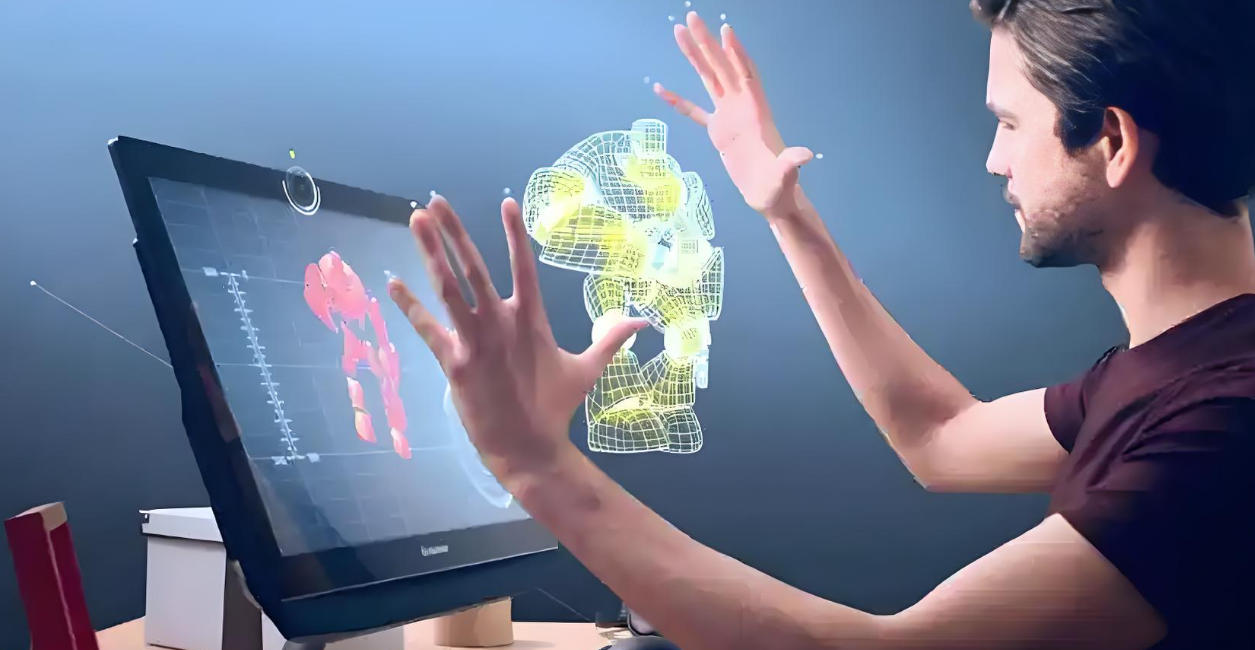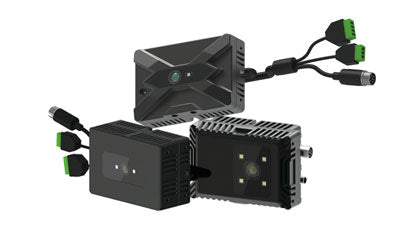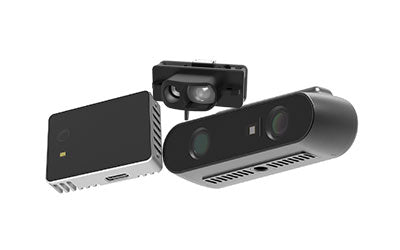TOF Gesture Recognition:Technology for NextGen Contactless Interaction

With the widespread adoption of smart devices and growing user demands for enhanced interaction experiences, contactless interaction is becoming a new trend in technology development. As a core technology, TOF (Time-of-Flight) gesture recognition leverages precise 3D sensing capabilities to provide reliable solutions for smart homes, automotive systems, VR/AR, and other application scenarios. This article will delve into the principles of TOF gesture recognition, typical applications, technical challenges, and future development trends.
Q: What is non-contact distance measurement, and what role does it play in TOF-based gesture recognition?
A: Non-contact distance measurement (also called non-contact measurement) is a technology that captures the distance between an object or human body and a sensor without physical contact. In TOF-based systems, including DTOF (Digital Time-of-Flight) and ITOF (Indirect Time-of-Flight) sensors, this is achieved by emitting light pulses and measuring the time-of-flight of the reflected light. The result is precise 3D spatial perception of hand or body movements.
In next-generation contactless interaction, time-of-flight (TOF) technology allows devices to real-time detect user gestures, postures, and movement trajectories without touching screens or buttons. By optimizing for low power consumption, TOF sensors can operate continuously on smartphones, wearables, and other mobile platforms.
Understanding accuracy vs precision is critical for TOF-based gesture recognition: accuracy ensures the measured distances reflect real-world values, while precision (or preciseness) ensures consistent measurements over repeated gestures. Similarly, the field of view (FOV) of the TOF sensor, which defines the angular area the sensor can detect, directly affects gesture detection performance.
Beyond consumer electronics, the principles of time-of-flight measurement are also applied in high-resolution instruments, such as an electron microscope, where precise distance detection at microscopic scales enables detailed imaging.
In summary, non-contact distance measurement using TOF, DTOF, or ITOF is a core technology for next-generation gesture recognition, combining high accuracy and precision, optimized field of view, and low-power operation for seamless, contactless interaction.
1. The Rise of Contactless Interaction and Application Background
In recent years, as smart devices become increasingly common and users demand safer and more convenient operations, contactless interaction has gradually become a significant trend in technology. Particularly under the influence of the global pandemic, the need to reduce direct contact with public or personal devices has increased significantly, directly driving the rapid adoption of TOF gesture recognition and other 3D sensing technologies.
-
Smart Home: TOF gesture recognition provides intuitive and safe control for smart home devices. Users can control lighting, audio systems, or adjust the air conditioning temperature through hand waves, swipes, or specific gestures without touching any switches. This not only improves convenience but also reduces cross-contamination risk, providing a safer living environment.
-
Automotive Systems: Contactless interaction is equally important in cars. Drivers can use TOF gesture recognition to control navigation systems, adjust volume, or operate climate controls without being distracted by physical controls. This enhances safety while providing a smarter and more convenient driving experience.
-
Medical Scenarios: In hospitals or laboratories, doctors and nurses often need to operate equipment or view imaging data. TOF gesture recognition allows them to perform these tasks without touching the device, minimizing cross-infection risks. In operating rooms or isolation wards, contactless interaction ensures both medical safety and operational efficiency.
As smart devices penetrate daily life and work scenarios, contactless interaction not only improves user experience but also enhances public safety, operational efficiency, and hygiene levels. TOF gesture recognition provides precise 3D sensing, making these interactions feasible and reliable across homes, vehicles, medical settings, and beyond.
2. Principles of TOF Gesture Recognition
TOF gesture recognition relies on the Time-of-Flight principle to capture depth information. Infrared light pulses are emitted, and the time for the light to travel to the hand and reflect back is measured. This distance data is converted into high-precision 3D point clouds, forming a real-time model of hand movements so the device can accurately interpret user gestures.
Compared with traditional 2D gesture recognition, TOF has clear advantages:
-
Precise Depth Perception: TOF can detect tiny distance changes between fingers, enabling recognition of subtle gestures. This allows for complex, natural interactions like rotation, grabbing, or zooming virtual objects.
-
Strong Environmental Adaptability: 2D recognition often relies on RGB images and is affected by lighting and background clutter. TOF uses infrared depth sensing, which is stable in both dim and bright environments.
-
High Real-Time Performance: TOF cameras, combined with hardware acceleration and algorithm optimization, can capture actions within milliseconds, enabling low-latency recognition of fast hand movements or complex multi-finger gestures.
By providing accurate 3D spatial information, TOF solves depth and spatial perception limitations of 2D recognition, supporting reliable, intuitive contactless interaction.
3. Typical Application Scenarios
TOF gesture recognition has been applied in various consumer electronics, offering intuitive and natural contactless interaction. Typical applications include:
-
Smart TVs: Users can control channels, volume, or launch apps via hand waves or gestures without a remote. This enhances convenience and reduces contact with device surfaces, improving hygiene.
-
VR/AR Headsets: By capturing hand depth information, users can grab, rotate, scale objects, or operate virtual interfaces. This improves immersive experiences for gaming, education, training, and industrial design.
-
Automotive Control: In cars, TOF gesture recognition captures driver hand gestures for navigation selection, multimedia control, or phone operation. Compared with touch controls, gesture control reduces driver distraction and improves safety while offering smart, efficient operation.
TOF gesture recognition is also expanding to smart homes, wearables, and public terminals, enabling hands-free menu navigation, device control, and safe interaction in multi-user environments.
4. Technical Challenges and Optimization
Despite rapid development, TOF gesture recognition faces challenges:
-
Environmental Interference: Strong light, reflective surfaces, or multiple simultaneous users may affect accuracy.
-
Action Delay: Latency between gesture capture and device response can impact user experience.
-
Algorithm Complexity: High-precision 3D point cloud processing requires substantial computing resources.
Optimization strategies include:
-
Algorithm Enhancement: AI deep learning models improve gesture recognition and reduce misidentification.
-
Multi-Sensor Fusion: Combining TOF with RGB cameras and inertial sensors enhances environmental adaptability and stability.
-
Hardware Acceleration: Chip-level acceleration and edge computing reduce latency, improving real-time performance.
5. Future Trends: Multi-Modal Interaction and Smart Ecosystems
TOF gesture recognition is evolving from simple gestures to multi-modal interaction and integration into intelligent ecosystems:
-
Voice + Gesture: Devices can interpret voice commands combined with hand gestures for precise control of smart home appliances.
-
Eye Tracking + Brain-Computer Interface: VR/AR and BCI devices can achieve immersive experiences by combining eye tracking with TOF gesture recognition, enabling users to control virtual objects intuitively.
-
Intelligent Ecosystem Integration: TOF gesture recognition can serve as a unified interaction standard across smart homes, automotive systems, wearables, and AR/VR devices. Unified 3D gesture recognition interfaces enable seamless control across devices, enhancing efficiency and natural interaction.
TOF gesture recognition will expand from single-device operation to full-scene intelligent interaction, integrating with AI, AR/VR, and wearables to redefine human-computer interfaces.
Conclusion
TOF-based gesture recognition, with its precise 3D sensing and low-latency response, brings natural and intuitive contactless interaction to smart devices. Across smart homes, vehicles, and AR/VR, TOF gesture recognition is becoming a core interaction technology, driving the full implementation of next-generation intelligent ecosystems.
Synexens Industrial Outdoor 4m TOF Sensor Depth 3D Camera Rangefinder_CS40
Our professional technical team specializing in 3D camera ranging is ready to assist you at any time. Whether you encounter any issues with your TOF camera after purchase or need clarification on TOF technology, feel free to contact us anytime. We are committed to providing high-quality technical after-sales service and user experience, ensuring your peace of mind in both shopping and using our products






